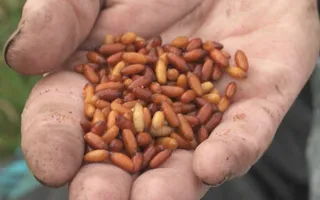The maggot forms a hard, brown outer shell before eventually metamorphosing into a fly. This is the same process by which a caterpillar forms a chrysalis before emerging as a butterfly.
Squatts and pinkies also go through this process, although it is only the caster of the large maggot that is sold in tackle shops and used by anglers. Casters are loved by all fish species, especially roach, perch, bream and chub, but tend to attract a larger size of fish. This is believed to be due to their still nature, crunchy outer shell and soft protein-rich contents.
Producing your own casters
Most anglers will buy casters from tackle shops. With a little bit of effort, you can ‘turn' your own casters.
To get a pint of casters you will need perhaps a pint and a half of best quality large white maggots. Once there are signs that the first of the maggots are beginning to turn into pale coloured casters, put them through a maggot riddle. The live maggots will crawl through but the casters will not. Remove any dead maggot skins at this stage. Repeat this process two or three times each day, removing the casters to the fridge each time. They are then best stored in a plastic bag with damp kitchen towel to avoid bag burn.
History of the caster
Casters have been used as fishing bait for hundreds of years and it's not accurate to suggest that the Lancashire legend Benny Ashurst, father of 1982 world champion Kevin Ashurst, invented the caster. However, it was Benny who developed the sinking caster, as explained by John Essex in the video below.





